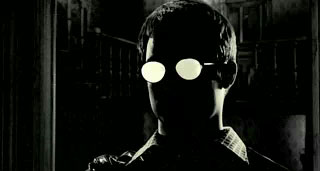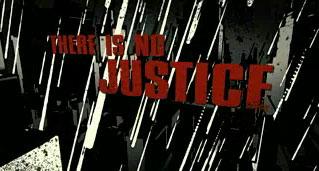When director Robert Rodriguez started working on Sin City he knew it would have to look just like the original style from the classic comic books, so much so in fact that Frank Miller is listed as co-director. Making a comic book look come to life isn't easy, for this he employed CaféFX.
"The panels of the comic were our storyboards," said CafeFX visual effects producer Edward Irastorza. "In fact, the only reference we were given was a copy of the book, which at first, seemed like a pretty simple task since most of the action takes place on either a plain black or white background. But, Robert wanted actual environments. In the entire 45-minute segment, I think only two walls were shot. The rest we created from scratch."
"At the onset, creating complete environments for over 600 shots can seem scary, but strangely, I'm getting used to it," says digital effects supervisor Everett Burrell. "After Spy Kids 3-D and Sky Captain it almost feels like the norm for us. The difference here was that the environments weren't fantastical but had to be realistic, grimy, weathered, and lived in. We had to convince the audience that these were the environments in which the characters existed, not CG effects."
"We started construction of our city very practically," said Irastorza. "In-house art director Peter Lloyd drove down to Los Angeles and photographed run-down architecture of the '20s and '30s, inside and out. Also, knowing that we would be creating a "noir" look, we bought a film noir DVD boxed set and studied it, taking notes on what apartments and streets looked like at that time, and what they contained. We also studied Eraserhead, which again has a distinctive look we were going for. And, our studies didn't stop at urban areas, we also had to create a tarpit for a sequence, which was a completely different investigation."

Not only does Sin City the film emulate the panels and story lines of the novels, it emulates the original graphic style. "All of the footage was filmed in color, and needed to be changed to black-and-white," said Irastorza. "And, by black-and-white, I don't mean grey, which is probably what you're used to seeing when watching a black-and-white movie. I mean, either black or white, with very little to no grey in between. The same went for all of the environments we created, which is exactly how everything is drawn in the novels, to essentially create a moving comic. And like the book, we added select splashes of color. All the characters have eye color, Dwight's shoes are red, and so forth. The book was our guide."
Occasionally, CaféFX went off the book, and drew color inspiration from other films. "In one segment directed by Quentin Tarantino, he wanted to employ something he saw in Dario Argento's Suspiria, when characters were lit with something that looked like a color wheel.
Seeing that it was shot in the 70s they probably were just lit with a color wheel. However, we had to change the color and the lighting on the characters as they moved. Which, really wasn't easy, but I think we finally got an effect very close to the source."

"It seems simple when you speak of rooms or streets," said Burrell. "But, when you break it down, you're talking about walls, doors, windows, furniture, sinks, stairways, buildings, trash cans, cars, lights, absolutely everything that's not an actor. It's not only a lot to render, but a lot to keep track of. Especially, for over 600 shots. We couldn't just look at footage and say 'This is where Dwight's on the street' because there was no street, only Dwight. Thankfully, the internal tracking kept everything running smoothly and everyone on the same page."

So in the end, CaféFX succeeds in creating a world only implied in books. "It's satisfying," says Irastorza. "And, odd to think that only last July we had nothing but actors in front of a greenscreen. "

CaféFX was not only in charge of all the environments, the color and lighting, but also had to play Mother Nature. "During our segment, it's supposed to rain, constantly. Of course, not a single drop was filmed,"
laughed Burrell. "So every time a character was outside, we needed rain; every time a character was next to a window, rain needed to bounce off of it."
"All I had to go on for the rain was a reference shot from set," said digital effects supervisor Jeff Goldman.
"And that had all the subtly of a fire hose. But, it was okay, because at least I knew what 'too much' looked like," he laughed. "I ended up creating the rain, in Digital Fusion particles, with only the occasional 'sparkler' effect of it bouncing off of the actors. I didn't want to overuse that, because while it was cool looking, it could have easily been a distraction."
Goldman achieved the look of rain bouncing off of windows 'practically.'
"This was important to get right, because a lot of scenes were near windows or in cars. We went in back and filmed water hitting glass, then employed what we filmed. As we learned, nothing looks more real than reality."
So in the end, CaféFX succeeds in creating a world only implied in books. "It's satisfying," says Irastorza. "And, odd to think that only last July we had nothing but actors in front of a greenscreen.
CaféFX is a division of the ComputerCafe Group, and headquartered in Santa Maria, CA. The company was founded as ComputerCafé in 1993. CaféFX has worked on major motion pictures such as The Aviator, the World of Tomorrow, Master and Commander, The Core, Panic Room, and Armageddon.
- reply
Permalink- reply
Permalink